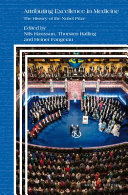Author
Thomson; James A. ; Sussell; Jesse
Year
2015
Publisher
RAND Corporation
Language
English
Pages
3
Last Update
28-Nov-2025
Keywords
Population Studies ; Statistics ; Political Science
Virtually all observers of American politics agree that there is a high degree of polarization between the Democratic and Republican parties in Congress. There is also a general consensus that this interparty polarization has been increasing over time: The ideological gap separating the parties of Tip O’Neill and Gerald Ford in the 1970s may have been large, but it was smaller than the distance between the Clinton Democrats and the Gingrich Republicans in the 1990s, and smaller still than the gulf between the parties of Obama and Boehner today. There is much less consensus, however, as to the causes of...
Related
See More
Die Canabae von Carnuntum II

The Collegiate Learning Assessment

Einstein, el gran cuestionador

Born a Chief

Attributing Excellence in Medicine, The History of the Nobel Prize

Evaluation of California's Statewide Mental Health Prevention and Early Intervention Programs